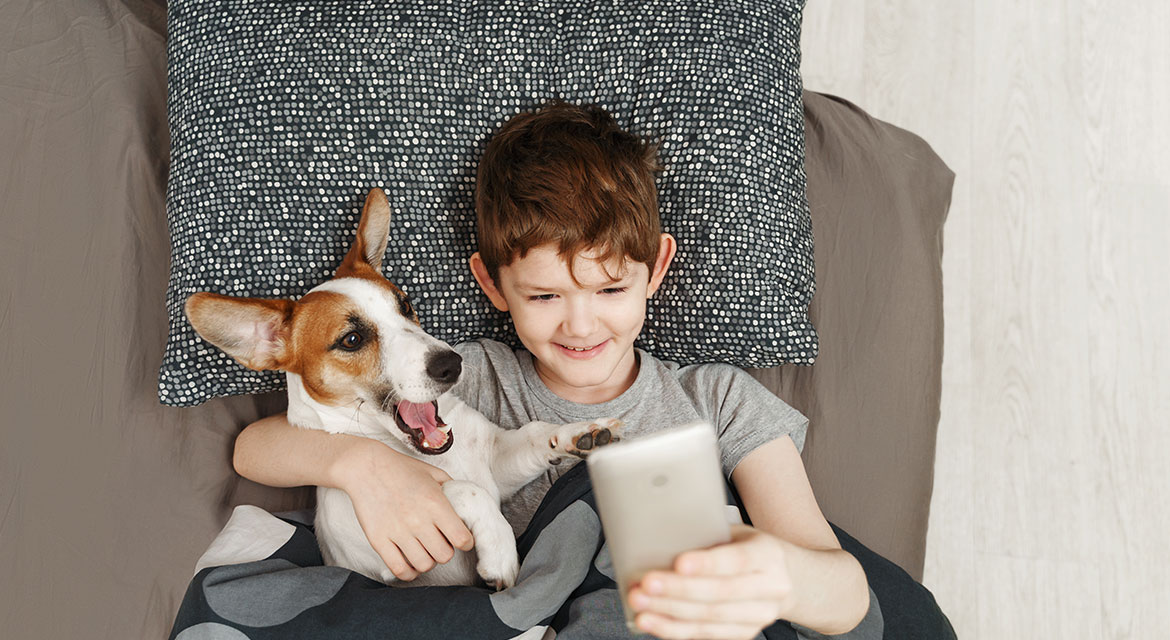 4 May
4 MayWork from Home with Pets: Mastering Productivity and Pet Care
Table of Contents
Introduction
The modern workplace has undergone a dramatic transformation in recent years, with remote work becoming increasingly common. For millions of professionals, the ability to work from home with pets has become one of the most cherished benefits of this shift. While sharing your workspace with a furry companion offers numerous benefits including reduced stress and increased happiness it also presents unique challenges that require thoughtful solutions.
Whether you’re new to remote work or a seasoned home office veteran, learning to balance professional responsibilities with pet care is essential for long-term success. This comprehensive guide explores proven strategies to help you work from home with pets effectively, maintaining productivity while ensuring your animal companions remain happy, healthy, and well-behaved.
The Benefits of Working from Home with Pets
Before diving into practical strategies, it’s worth acknowledging the many advantages that come with having pets in your home workspace:
Emotional Well-being
Studies consistently show that interacting with pets reduces stress hormones like cortisol while increasing positive hormones such as oxytocin. When you work from home with pets, you gain constant access to these mood-boosting interactions. A quick pet session between meetings or during breaks can significantly improve your mental state and help prevent burnout.
Physical Health Benefits
Pet ownership, particularly for dog parents, often leads to increased physical activity. When you work from home with pets, regular walks or play sessions provide natural breaks that encourage movement throughout your workday. These physical activity breaks improve circulation, reduce eye strain, and combat the negative health effects of prolonged sitting.
Improved Work-Life Balance
One of the greatest challenges of remote work is maintaining healthy boundaries between professional and personal time. Pets naturally enforce these boundaries by requiring regular care and attention. When you work from home with pets, their needs for walks, meals, and interaction help structure your day and prevent overworking.
Creating a Pet-Friendly Home Office
The foundation of successful remote work with animal companions begins with thoughtful workspace design. Here’s how to create an environment where both you and your pets can thrive:
Designating Dedicated Spaces
When setting up to work from home with pets, establishing clear boundaries is essential. Create a dedicated workspace that signals “work mode” to both yourself and your pet. Consider the following approaches:
- Choose a quiet room or corner with minimal distractions
- Install a pet gate if needed to create physical boundaries during important calls
- Ensure adequate ventilation and natural light for both your comfort and your pet’s
- Remove hazards like exposed cords, small objects, or toxic plants
Remember that while boundaries are important, proximity can be beneficial. Many pets simply want to be near you, even if they’re not directly interacting. Positioning your pet’s bed within sight but out of your immediate workspace often satisfies their need for connection without causing disruption.
Pet-Proofing Your Technology
Technology vulnerabilities represent one of the biggest challenges when you work from home with pets. Protect your equipment and data with these precautions:
- Invest in cord protectors for charging cables and peripherals
- Choose a spill-resistant keyboard if your pet frequently disturbs your workspace
- Back up important files regularly in case of pet-related accidents
- Consider wireless peripherals to reduce enticing dangling cords
- Keep drinks in covered containers to prevent spills caused by curious tails
Creating Comfort Zones
Both you and your pet need comfortable spaces within your work environment. When you work from home with pets, consider creating these pet-friendly zones:
- Position a pet bed, blanket, or crate near (but not directly at) your workspace
- Place window perches for cats to enjoy outdoor views while staying close
- Set up a small basket of rotating toys within reach for quick play sessions
- Consider a pet-specific water station in your office to minimize trips elsewhere
Establishing Effective Routines
Perhaps the most critical element of successfully working from home with animal companions is establishing and maintaining consistent routines:
Morning Preparation
How you start your day sets the tone for both your productivity and your pet’s behavior. Before you begin to work from home with pets each day:
- Take dogs for a substantial morning walk or play session to burn energy
- Engage cats with interactive toys to satisfy their hunting instincts
- Provide a nutritious breakfast at a regular time each day
- Give focused attention before transitioning to work mode
This pre-work routine helps deplete excess energy and signals to your pet that attention-intensive time is ending and quieter work hours are beginning.
Structured Work Blocks
When planning your daily schedule to work from home with pets, consider both your professional responsibilities and your pet’s needs:
- Schedule important calls or deep work during your pet’s natural rest periods
- Build in regular 5-10 minute breaks for pet interaction and care
- Use your calendar to block time for pet walks, feedings, and play sessions
- Create visual or auditory cues that help your pet understand when you’re in “do not disturb” mode
Most pets quickly adapt to routines and will learn to expect attention at specific times. This predictability helps reduce anxiety-driven disruptive behaviors.
End-of-Day Transitions
How you close your workday is equally important when you work from home with pets. Create a consistent end-of-day routine that:
- Signals to your pet that focused work time is ending
- Includes a physical activity component to reconnect
- Transitions both you and your pet from “work mode” to “home mode”
- Reinforces the bond that makes working alongside pets so rewarding
Managing Different Types of Pets
Different animal companions present unique challenges when you work from home with pets. Here are tailored strategies for common pet types:
Dogs: The Social Companions
Dogs typically require the most attention and adaptation when you work from home with pets. These social animals thrive on interaction but can be taught to respect work boundaries:
- Implement basic obedience training focusing on “place” or “settle” commands
- Provide long-lasting chew toys or puzzle feeders during important meetings
- Consider doggy daycare 1-2 days a week for high-energy breeds
- Use exercise pens or baby gates for puppies or dogs in training
- Schedule mid-day walks to break up long work sessions
The key to success with dogs lies in balancing their need for social interaction with adequate physical and mental stimulation.
Cats: The Independent Coworkers
While generally more independent, cats still present unique challenges when you work from home with pets. Their curiosity and comfort-seeking behaviors can disrupt focus:
- Create elevated resting spaces that offer both comfort and a view of you
- Provide scratching surfaces near (but not on) your workspace
- Schedule interactive play sessions during your breaks using wand toys
- Consider feeding puzzles or window perches to redirect attention during calls
- Accept that occasional keyboard visits are inevitable keep a dedicated “decoy keyboard” for persistent typists
Many cat owners find that providing alternative spaces at different heights satisfies their pet’s need for proximity without direct workspace interference.
Small Pets: The Quiet Companions
Smaller pets like hamsters, guinea pigs, or birds can actually be ideal companions when you work from home with pets. Their care needs often align well with natural work breaks:
- Position their enclosure within view but away from your immediate workspace
- Use cage maintenance and socialization as physical activity during breaks
- Consider sound dampening measures for noisy species during calls
- Create a care schedule that complements your work rhythm
Technology and Tools to Support Remote Work with Pets
Modern technology offers numerous solutions to enhance your experience when you work from home with pets:
Monitoring and Interaction Tools
- Pet cameras with two-way audio allow you to check in and reassure anxious pets
- Smart treat dispensers can be activated remotely during meetings
- Automated toys provide stimulation during focused work periods
- White noise machines mask potentially distracting environmental sounds
Communication Management
When you work from home with pets, unexpected interruptions during video calls are inevitable. These tools help minimize disruptions:
- Noise-canceling headphones with good microphones filter out background pet sounds
- Virtual backgrounds hide visual distractions during video conferences
- Meeting scheduling apps help coordinate calls during your pet’s quieter periods
- Quick access to mute buttons for unexpected barking or meowing episodes
Handling Common Challenges
Even with careful planning, certain challenges frequently arise when you work from home with pets. Here are solutions to common scenarios:
Attention-Seeking Behaviors
If your pet regularly interrupts your concentration with nudging, barking, or other attention-seeking behaviors:
- Implement a “work time” cue through consistent language and actions
- Schedule regular, short attention breaks throughout your day
- Provide engaging toys that don’t require your participation
- Consider whether your pet might need more exercise before work sessions
Remember that attention-seeking often intensifies when first transitioning to remote work. With consistency, most pets adapt to new routines within a few weeks.
Managing Video Call Interruptions
When you work from home with pets, video call interruptions are sometimes unavoidable. Handle them professionally by:
- Briefly acknowledging the interruption with humor and moving on
- Having treats or quiet toys readily accessible to redirect attention
- Setting expectations with colleagues about your work-from-home situation
- Using virtual backgrounds when appropriate to minimize visual distractions
Most colleagues understand and even appreciate the authentic nature of home workspace challenges.
Dealing with Separation Anxiety
Ironically, some pets develop anxiety symptoms when you work from home with pets but don’t engage with them constantly. Signs include excessive whining, destructive behavior, or clinginess. Address this by:
- Creating physical separation gradually, starting with short periods
- Using calming aids like pheromone diffusers or anxiety wraps
- Providing special “work time only” treats or toys
- Consulting with a veterinarian for severe cases that don’t improve with training
Professional Success While Working with Pets
Maintaining professional standards remains essential when you work from home with pets. These strategies help balance pet care with career advancement:
Setting Clear Expectations
Be transparent with managers and colleagues about your home office situation. Most organizations with remote policies understand the realities of home workspaces, including pet presence.
Creating Contingency Plans
When you work from home with pets, always have backup plans for important meetings or deadlines:
- Arrange pet sitting or dog walking services for crucial presentations
- Keep emergency toys or long-lasting treats accessible for unexpected calls
- Know which colleagues might be able to cover for you in a pet emergency
- Have a designated “safe room” where pets can stay during high-stakes work events
Finding the Right Balance
The ultimate goal when you work from home with pets is finding a sustainable balance that serves both your career and your pet’s wellbeing:
- Regularly assess what’s working and what needs adjustment
- Be willing to invest in support services when needed
- Recognize that different work phases may require different arrangements
- Appreciate the unique benefits that come with sharing your workspace with animals
Maintaining Pet Health and Wellness
Successfully working alongside pets requires proactive health management. When you work from home with pets, incorporate these practices:
Regular Exercise Routines
Physical activity is crucial for pet health and behavior management:
- Schedule consistent daily walking times for dogs
- Create interactive play sessions for cats and other pets
- Use lunch breaks for more intensive exercise when possible
- Consider fitness-tracking tools to ensure adequate activity levels
Mental Stimulation
Mental engagement is equally important when you work from home with pets:
- Rotate toys regularly to maintain interest
- Incorporate training sessions into work breaks
- Use feeding puzzles to extend meal times and engage problem-solving skills
- Consider scent games or hide-and-seek activities that can be set up quickly
Veterinary Care and Monitoring
Working from home provides unique opportunities to monitor your pet’s health:
- Schedule regular preventative checkups
- Watch for behavioral changes that might indicate health issues
- Maintain regular grooming routines to prevent complications
- Keep veterinary contact information readily accessible
Conclusion: Embracing the Work from Home with Pets Lifestyle
The ability to work from home with pets represents one of the most significant benefits of remote work. With thoughtful planning, consistent routines, and appropriate boundaries, you can create a harmonious environment that supports both professional productivity and animal wellbeing.
Remember that successfully working alongside your pet is an evolving process that requires patience and flexibility. What works during one project or with one pet might need adjustment for different circumstances. By approaching the situation with creativity and compassion, you’ll discover personalized solutions that allow both you and your pet to thrive in your shared workspace.
As remote work continues to reshape professional life, the skills you develop while learning to work from home with pets will serve you well enhancing your adaptability, patience, and ability to maintain focus amid distractions. These qualities benefit not only your relationship with your pet but also your overall professional development in an increasingly flexible work world.
Frequently Asked Questions About Working from Home with Pets
Q: How do I manage important video calls when I work from home with pets?
A: Prepare in advance by exercising your pet, providing engaging toys, using a quiet room with a closed door when possible, and having treats ready to redirect attention. Let colleagues know about your situation, and handle interruptions with professionalism and humor.
Q: What pet breeds are best suited for remote work environments?
A: While individual temperament varies widely, breeds known for being calm and independent often adapt well when you work from home with pets. For dogs, consider Greyhounds, Basset Hounds, Bulldogs, or many senior dogs. For cats, British Shorthairs, Ragdolls, and Maine Coons typically have relaxed dispositions compatible with home offices.
Q: How do I prevent my pet from barking during calls?
A: Address this common challenge when you work from home with pets through consistent training, adequate pre-work exercise, sound masking with white noise machines, and using positive reinforcement to reward quiet behavior. For persistent issues, consult with a professional trainer.
Q: Is it okay to hire help even though I’m home all day?
A: Absolutely! Many remote workers benefit from dog walkers, pet sitters, or occasional daycare even while working from home. These services provide focused work time and additional stimulation for your pet, creating a healthier balance for everyone.
Q: How do I handle pet emergencies during important work commitments?
A: Establish an emergency plan before you need it. Keep your veterinarian’s contact information accessible, know which colleagues could cover urgent work matters, and have a list of pet-sitters who offer emergency services. Many veterinarians now offer telehealth options that can be especially valuable when you work from home with pets but can’t leave immediately.
You May Also Like :
How to Stop Dog Barking: The Complete Guide to a Quieter, Happier Pet
Comprehensive Guide to Interactive Cat Toys: Keeping Indoor Cats Happy and Healthy
Dog Grooming at Home: The Complete Guide for Dog Owners
10 Essential Dog Training Tips Every New Puppy Owner Should Know
How to Take Care of a Pet: Essential Guide to Responsible Pet Ownership
The Ultimate Guide to Cat Playtime: Why Play Is Essential for Your Feline’s Health and Happiness
How to Successfully Work from Home with Pets: A Comprehensive Guide
The Mental Health Benefits of Having a Dog: What Every Pet Owner Should Know
How to Groom a Puppy for the First Time: Step-by-Step Guide
Quick Solutions for Daily Pet Care: Simple Strategies for a Happier Pet and Easier Routine




